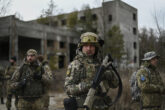January 02, 2020
The state of acquisition is in need of better coordination
The U.S. defense enterprise has been in a near-constant state of acquisition reform since the 1980s. Although it has been a top Pentagon priority, expected competition with China and Russia has made our ability to develop and buy advanced systems efficiently a paramount concern. Realizing the threat, the department has generally accepted that it needs to do business differently in order to sustain technological advantage. This has led to a dizzying number of new and alternative offices, acquisition authorities, and initiatives to introduce more competition, fast-track fresh ideas and welcome commercial market participants. Most of these efforts — while vital — are not well-coordinated.
The latest round of defense acquisition reform made through the 2016 and 2017 National Defense Authorization Acts, did two things. First, it expanded existing and created a slate of new acquisition authorities designed to increase speed and agility in weapons system development and procurement. At the same time, it devolved many authorities held centrally in the Office of the Secretary of Defense down to the military departments.
In creating new authorities while also devolving authority to the services, Congress, knowingly or not, created an acquisition laboratory. Each of the services has interpreted the new authorities differently, and under the current regime they are free to implement them accordingly. As a result, we currently have an experiment running in real time, testing different acquisition approaches.
Read the full article in Defense News.
More from CNAS
-
Make Good Choices, DoD
In a new report, Susanna V. Blume and Molly Parrish offer a deep dive into how the U.S. Department of Defense makes decisions about what the U.S. military needs, what to buy a...
By Susanna V. Blume & Molly Parrish
-
Defense / Transatlantic Security
When Defense Becomes Destruction: Austria-Hungary’s Mistake and Ukraine’s RiskThis article was originally posted on War on the Rocks. The southeastern Polish city of Przemyśl, with its elegant 19th century Habsburg-era train station, remains one of the ...
By Franz-Stefan Gady
-
Defense / Transatlantic Security
Ukraine’s Catch-22 MomentThis article was originally published in the Financial Times. In Joseph Heller’s wartime classic, Catch-22, the protagonist Yossarian seeks out the US army surgeon Doc Daneeka...
By Franz-Stefan Gady
-
CNAS Insights | Budgetary Own Goals Undermine “Speed and Volume”
On November 7, Secretary of Defense Pete Hegseth laid out a plan to overhaul the Department of Defense’s (DOD’s) acquisition system. Placing an emphasis on delivering new capa...
By Philip Sheers, Carlton Haelig & Stacie Pettyjohn




